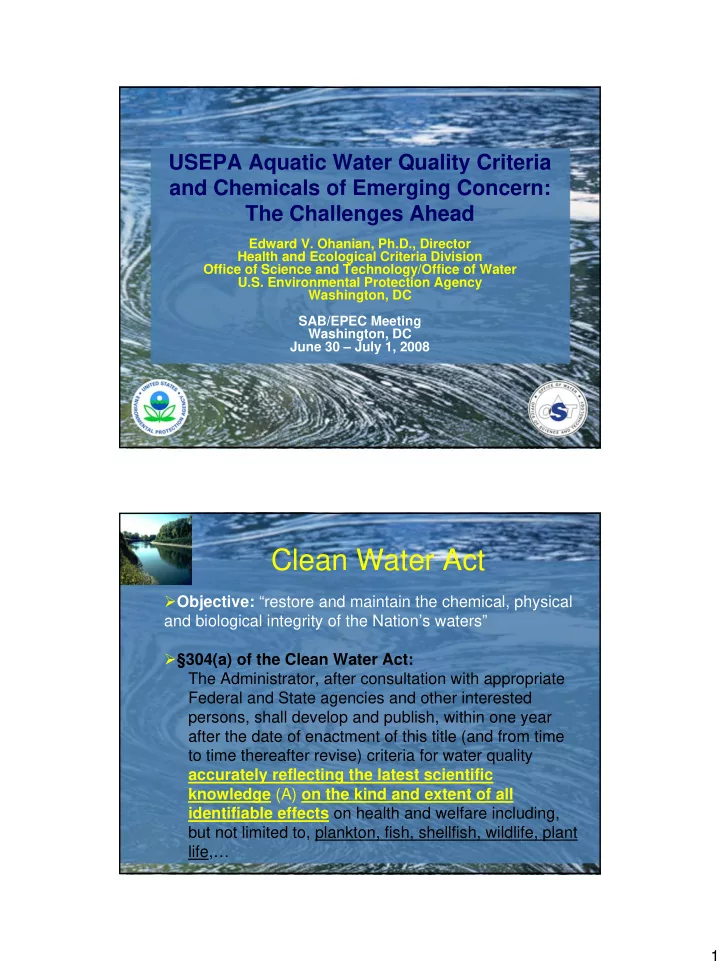

USEPA Aquatic Water Quality Criteria and Chemicals of Emerging Concern: The Challenges Ahead Edward V. Ohanian, Ph.D., Director Health and Ecological Criteria Division Office of Science and Technology/Office of Water U.S. Environmental Protection Agency Washington, DC SAB/EPEC Meeting Washington, DC June 30 – July 1, 2008 Clean Water Act ¾ Objective: “restore and maintain the chemical, physical and biological integrity of the Nation’s waters” ¾ §304(a) of the Clean Water Act: The Administrator, after consultation with appropriate Federal and State agencies and other interested persons, shall develop and publish, within one year after the date of enactment of this title (and from time to time thereafter revise) criteria for water quality accurately reflecting the latest scientific knowledge (A) on the kind and extent of all identifiable effects on health and welfare including, but not limited to, plankton, fish, shellfish, wildlife, plant life,… 1
Aquatic Life Criteria Derivation: The Current Guidelines ¾ The methodology by which EPA derives AWQC for aquatic life protection was published in 1985: Guidelines for Deriving Numerical National Water Quality Criteria for the Protection of Aquatic Organisms and Their Uses (Stephan, Mount, Hansen, Gentile, Chapman, and Brungs 1985) ¾ Referred to as the “Guidelines” Contaminants of Emerging Concern (CECs) ¾ Chemicals and other substances that have no regulatory standards, recently “discovered” in natural waters ¾ Potentially cause deleterious effects in aquatic life at environmentally relevant concentration ¾ May be candidates for future regulation depending on their toxicity and occurrence ¾ Frequently have insufficient toxicity data for aquatic life criteria development under the Guidelines 2
CECs Challenges ¾ Often detected in the environment at very low concentrations ¾ May cause sublethal effects that are more difficult to detect ¾ May cause effects in particular taxa but not others ¾ May cause effects only during particular exposure windows (life stages) Goals of White Paper ¾ Workgroup Recommendations act as a “Supplemental Interpretation” of the 1985 Guidelines for CECs: - Recommendations emphasize - technical rigor, - use of the "good science" clause, - maintain the level of protection and the amount of uncertainty. ¾ The white paper shows how criteria can be derived for CECs in a way that is explicitly consistent with the 1985 Guidelines. 3
Relationship of work to ongoing Guidelines Revisions ¾ Proposed Guidelines Revisions presented to SAB in 2005 ¾ Current efforts regarding CECs not addressed in 2005 ¾ National focus on CECs allowed OST to prioritize these efforts ¾ Our efforts begin to address 2005 SAB comments concerning: - non-traditional endpoints, sublethal/subchronic endpoints, - delayed effects, and - compounds such as EDCs 4
Recommend
More recommend